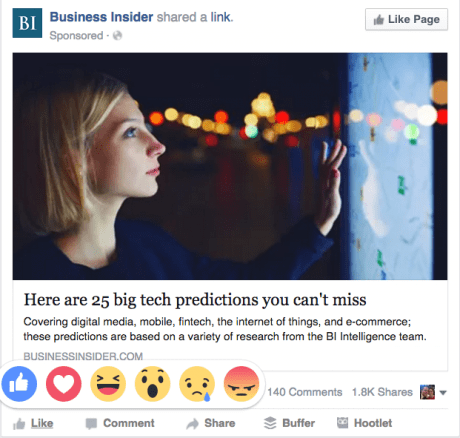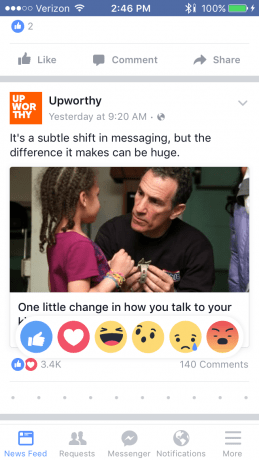Today, the long-awaited Facebook like button upgrade, Facebook reactions, went live allowing users more ways to express themselves through the social channel.
The new options provide users the chance to more accurately express a variety of feelings in response to posts and shares by their community. The feature has been in testing previously and was made available to all Facebook users today.
This change should be welcomed by most Facebook users–as requests for a “dislike” button go back more than 6 years. Many users wish to be able to show support in more than just likes, particularly when responding to a post in the face of tragedy or unpleasantness. It doesn’t feel right to “like” a post about the death of a loved one, a break-up, or even everyday annoyances like a no-good-very-bad-day. Reactions now allow the chance to empathize with one another in more than one way.
How are Facebook Reactions Different?
Facebook reactions allow you to express a wide variety of feelings in addition to just “liking” a post. You can express the traditional “like” along with expressing love, laughter, shock, sadness, and anger. In order to choose one of the alternative reactions, you simply have to hover over the “like” button and the different options will pop up.
Users can also see how others have reacted to a post by clicking on the reaction count, which has replaced the like count per post. The top three reactions of the post will show as icons below.
You can also see how each reaction tallies up when you click through.
In mobile, users have to hold on the like button and a series of animated reactions will pop up on the screen.
What Do Facebook Reactions Mean for Marketers?
While Facebook’s algorithm is constantly changing, sometimes to the chagrin of most marketers, this is a great move for brands. Marketers now have a chance to learn even more on how their audience is reacting and responding to their content.
Audience insights can be valuable. Over time, we’ll be able to see the degree to which our audience is moved by what we’re doing online. Smart brands will pay attention to their reactions, or lackthereof.
Early brand posts are likely to still have the traditional “like” vastly outweigh other kinds of options when the feature is new, but with time, marketers can expect this to start changing and be able to make their social efforts even more specified for the communities they serve.




Leave a Reply